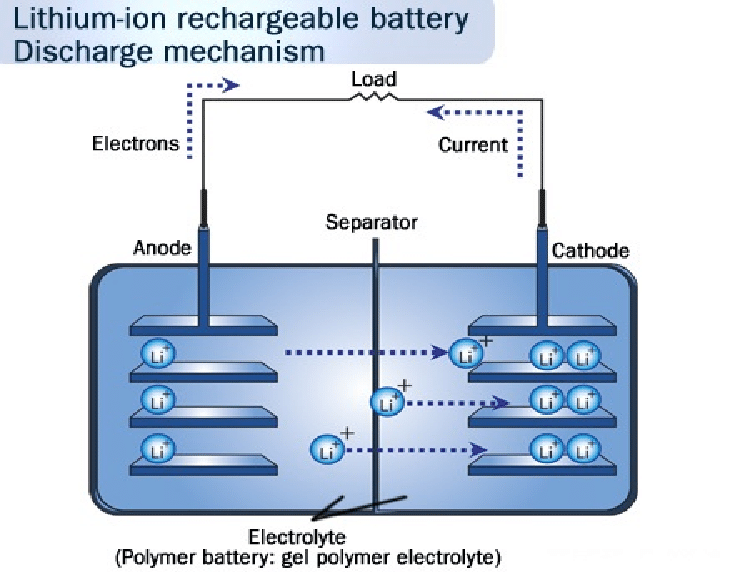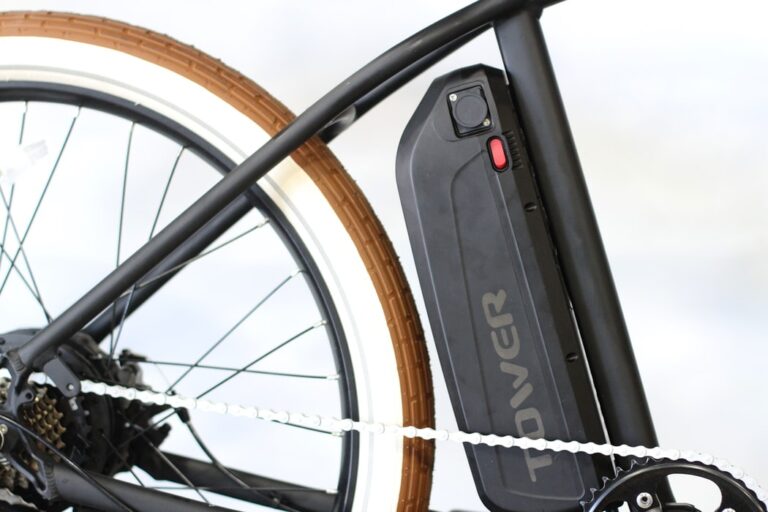Can Similar-Looking E-Bike Batteries Be Swapped?

Since they were first developed, batteries have proven to be super useful things.
Having the ability to power all manner of electronic devices on the go has made way for battery technology to advance to unprecedented levels – and has made things like E-Bikes more efficient and a viable mode of transportation.
Owning battery-powered electronic devices and keeping them working has always been a simple process.
Once the battery runs out – simply replace them with new ones that you bought from the store, and they’ll work again until they run out and have to be replaced.
But what about e-bikes? Well, just like the ones found in electric cars or mopeds, E-bike batteries are more sophisticated than regular batteries you can get at your local store.
They are rechargeable up to a certain number of times – typically about 800 (this is called the cycle count) before they have to be replaced entirely, and they are bigger and much heavier, requiring protective and robust mounting on your e-bike’s frame.
Technically speaking, you can use a similar-looking battery that can fit your e-bike’s battery base. Although technically possible, manufacturers advise against, due to significantly reduced performance and the potential to cause damage.
Table of Contents
How does an E-bike battery work?
A typical E-bike battery is made of Lithium-ion, which is known to be the best alternative to energy-dense gasoline when it comes to storing power economically and safely in all kinds of personal vehicles. The discharge mechanism in a Lithium-ion battery is displayed in the diagram below:

When your battery is at work, the positive Lithium-ions travel across the electrolyte (in this case, the gel polymer electrolyte) and through a separator from the Anode towards the Cathode, which are two dissimilar conducting materials.
During this process, the Cathode accumulates more positive charges from the Anode, thus creating a voltage between the two – and that voltage is essentially the driving force pushing electrons to the load and becoming kinetic energy that assists you while pedaling or throttling.
So..can I swap similar-looking E-Bike batteries?
While most modern e-bikes share the Lithium-ion connection across makes and models, that’s really where the similarities stop.
Much like any other proprietary electronic device worth thousands of dollars, e-bike manufacturers produce battery replacements for their products that are meant to work with the exact specifications and power requirements of the e-bike in question for the best performance.
In some really rare cases, a swap is doable. But usually at the cost of durability or performance.
So, yes – you can swap them. But do you really want to?
How are the batteries different from each other?
Although most E-bike models have the same form factor and design (it’s a bike, after all), there are several major differences when it comes to batteries for different brands of e-bike manufacturers. We’ve listed them below:
1. Battery type
There are 4 main battery types that are used in E-bikes today.
Lead-acid Batteries are cheap. In fact, they’re probably the cheapest on the market today. However, you pay for what you get – and what you get is a battery that is heavy, cannot carry much charge, and is sensitive to the elements.
Next on the list is Nickel-cadmium (NICd) batteries. They carry more charge capacity than Lead-acid batteries, but it is expensive and harder to recycle than most others. The cadmium used in this battery is known to be a nasty pollutant, so if going green is your reason for using an E-bike, using Nickel-cadmium batteries won’t justify that.
Nickel-metal Hydride (NiMh) batteries are more efficient and easier to recycle than Nickel-cadmium, but significantly more expensive. There are only a few of these batteries being produced for E-bikes, however, as the market is slowly being taken over by Lithium-ion batteries, which seems to be the industry standard among all electronic devices nowadays.
Lithium-ion batteries can be found everywhere, from small devices such as our smartphones and laptops to things like electric cars and other electric vehicles.
In the E-bike market alone, it has captured over 90% of the market share and for good reason, too.
The power-to-weight ratio is absolutely efficient, it can accept high charge currents and can last much longer than its predecessors with its high cycle count capacity before needing to be replaced.
2. Connectors
Different E-bike brands produce batteries that have different connector types, and if you can find the same battery type as a potential replacement E-bike battery, it’s hard to be sure that the connectors will be 100% similar too.
3. Voltage
Voltage is important as it is literally the horsepower that propels the electricity from the battery to your E-bike’s motor. If you’re swapping batteries on your E-bike with another, it’s recommended to ensure that the battery voltage matches with your previous one – because if your motor is built to handle only a certain amount of volts, anything more may cause it to malfunction.
Where can I find a replacement battery for my E-bike?
If your E-bike battery is starting to get old and in need of replacing, you can either find replacement batteries at your local dealer, or you can look for them online on your manufacturer’s website.
The recommended course of action is to always look for replacement batteries that are manufactured by the same company that made your E-bike, in order to ensure full compatibility and reduce the risk of trouble with functionality further down the line.
In some cases, you might find that the company that made your E-bike is no longer in business or not producing any spare parts anymore.
If this is the case, you’ll need to find aftermarket replacement batteries for your E-bike. Sites like Calibike stock a wide range of replacement batteries for most types of E-bikes, E-bike conversion kits, and all sorts of spare parts that you might find useful for your battery-assisted two-wheeled travel companion.
There are also other sites you can find online that make aftermarket replacement batteries for E-bikes, and you can also find some pretty cool DIY kits where you can assemble your own batteries to match the housing or frame of your E-bike.
All you need to do is follow the instructions in the kit step-by-step, a steady pair of hands, and you’re all set to go.



